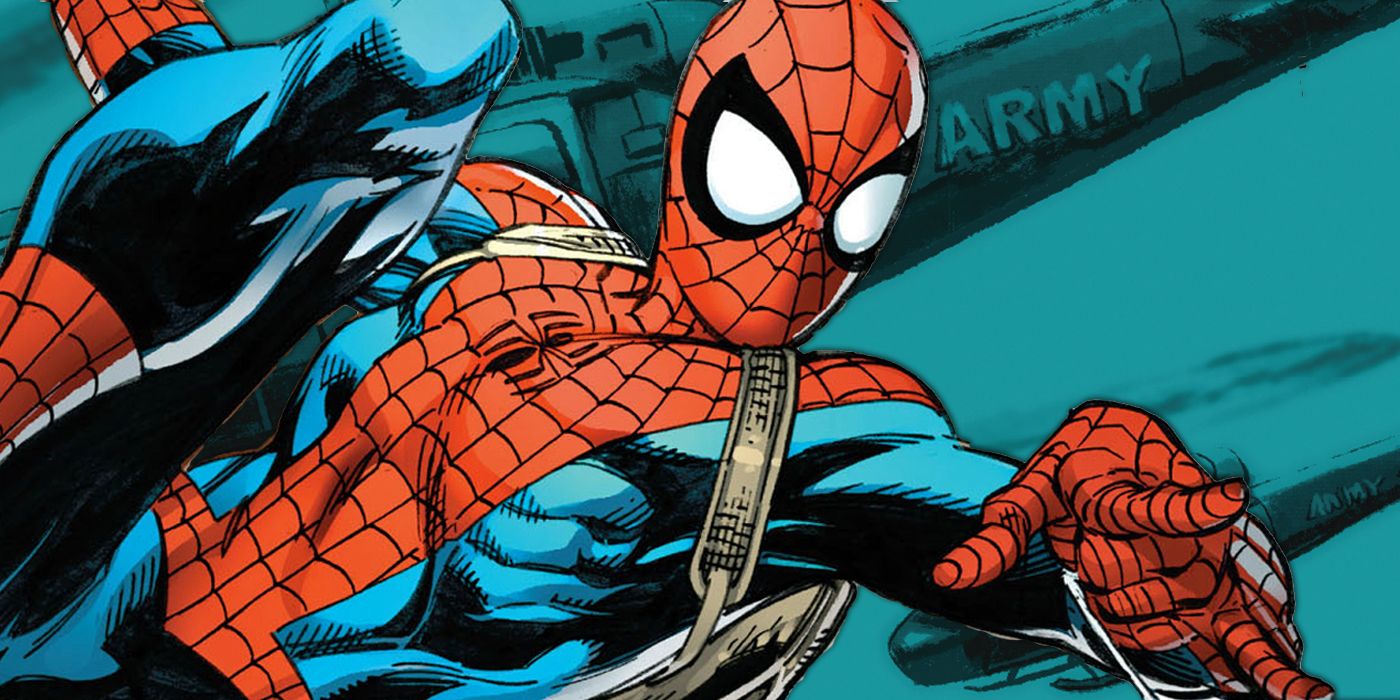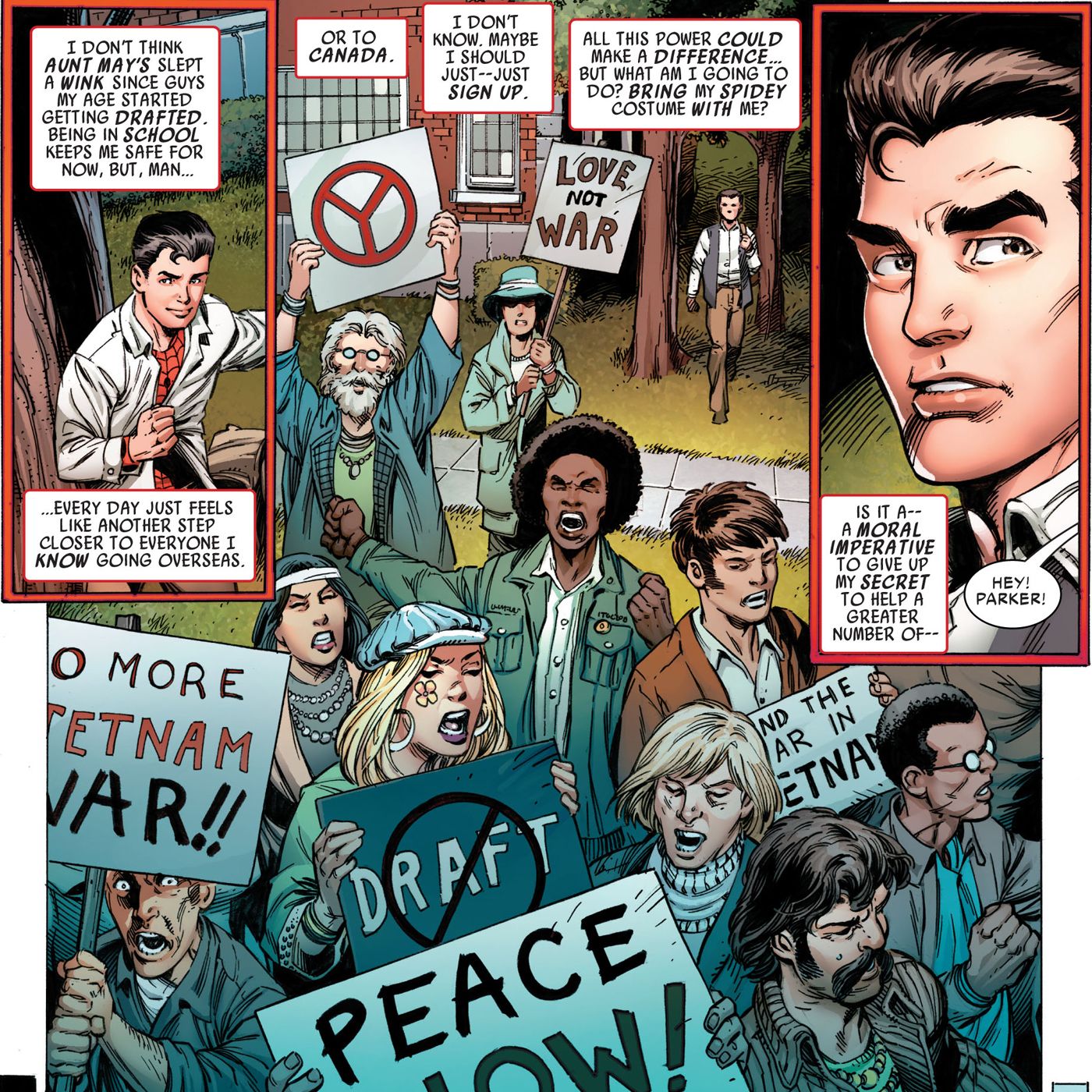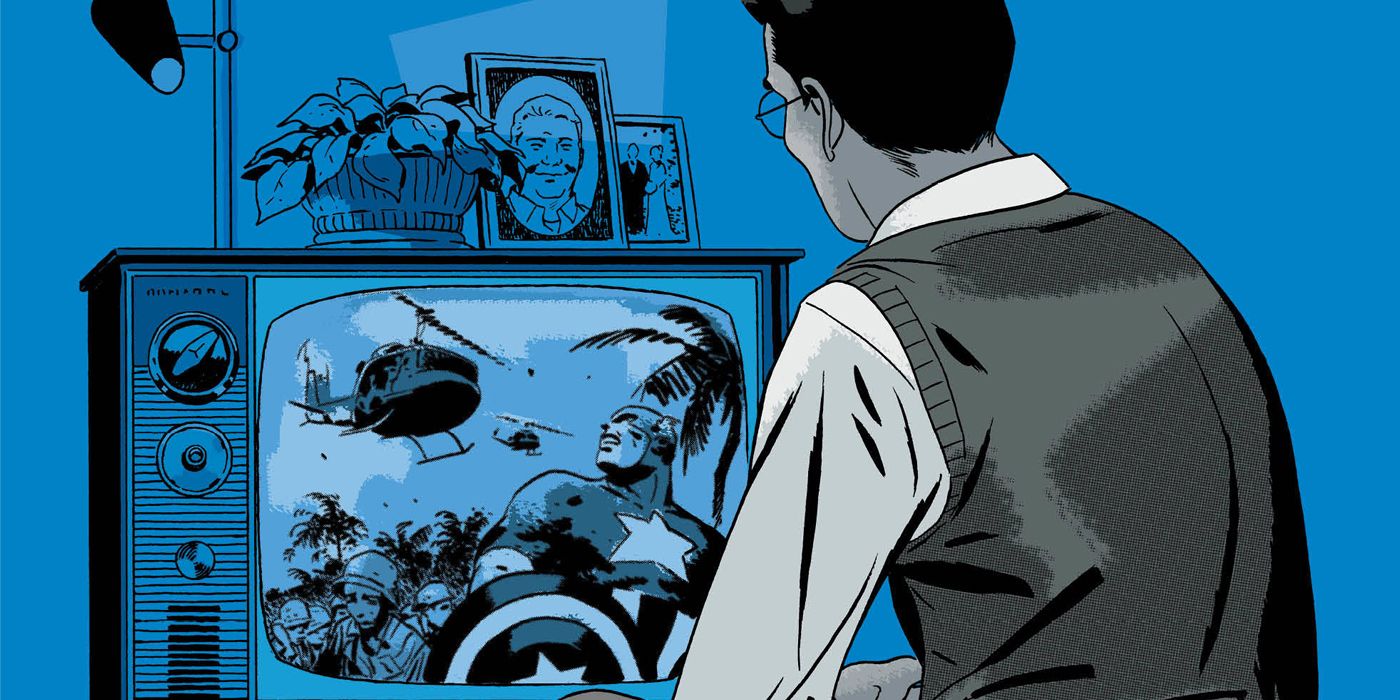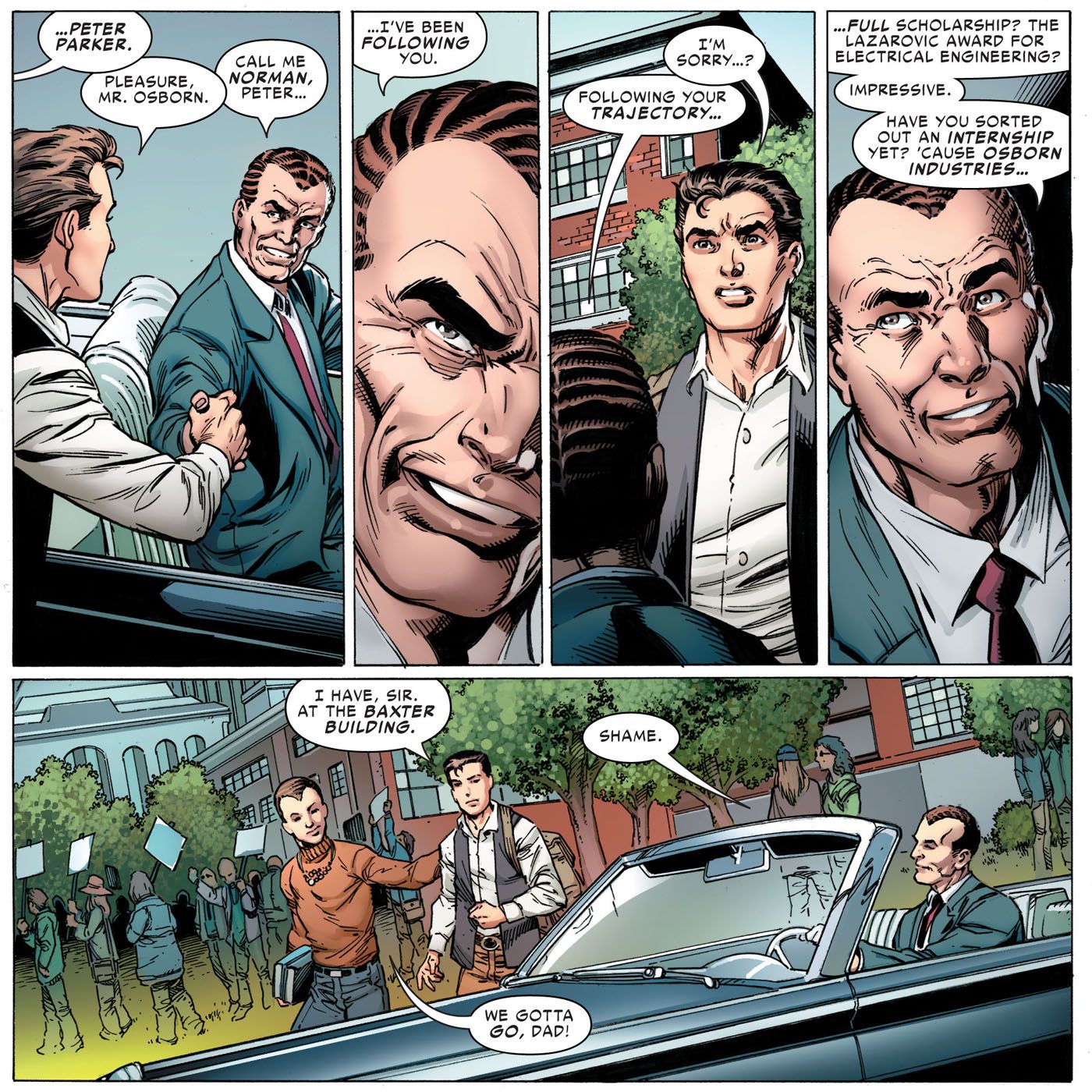WARNING: This article contains spoilers for Spider-Man: Life Story #1, by Chip Zdarsky, Mark Bagley, John Dell, Frank D'Armata and VC's Travis Lanham, on sale now.
In the Marvel Universe, Spider-Man never gets old. While Peter Parker grew up web-slinging from his teens into his 20s, the hero has more or less perpetually hovered somewhere around the age of 30 for the last several decades. And, thanks to sliding timeline that guides the shape of the Marvel Universe, Spider-Man will likely remain around that same age for the rest of his existence.
However, Spider-Man: Life Story takes a different, more realistic approach to Parker's aging. This alternate reality miniseries digs into what would have happened if Spider-Man had grown up and grew old in real-time after he debuted as a 15-year-old teenager in 1962.
RELATED: Spider-Man's Classic Black Costume is Back -- But Why?
While Spider-Man doesn't get too much older in Spider-Man: Life Story #1, the series kicks off by showing how real-world historical events would've affected Spider-Man's life while offering more modern and relatively realistic takes on classic Spider-Man plot points.
Instead of focusing on a precise moment or issue of Amazing Spider-Man as a jumping off point, Life Story evokes various eras of Spider-Man stories. The series opens about four years into Peter's time as Spider-Man in 1966, when he's a junior at Empire State University who's just starting to date Gwen Stacy.
As the issue begins, Spider-Man finds himself swinging into a period-accurate protest against the Vietnam War. This scene recalls a somewhat infamous moment from Stan Lee and Steve Ditko's Amazing Spider-Man #38, where Peter Parker scoffs at a group of student activists at a vague protest that could very reasonably be understood to be an antiwar rally.
While Parker seemed mostly annoyed by the protesters in the Marvel Universe, Life Story's Spider-Man is privately far more engaged in thinking about the Vietnam War. Peter struggles to figure out if Spider-Man has a responsibility to serve his country, as his friend Flash Thompson prepares to leave for the conflict, which happened in Amazing Spider-Man #47.
Both Captain America and Iron Man, the latter of whom is already on the front lines, figure heavily into Peter's thoughts about the war, which echoes Spider-Man's arc in Marvel's superhero Civil War. Life Story makes that connection even more explicit by raising the possibility of a superhuman draft that would force Spider-Man into service like Civil War's Superhuman Registration Act.
RELATED: Captain America Rescues Spider-Man's Ideals During Maximum Carnage
After a chance meeting, Captain America urges Spider-Man to follow his heart, shortly before he takes his own advice and travels to Vietnam to confront the conflict head-on. At the end of this issue, Captain America defends a village full of apparent non-combatants from advancing U.S. military forces. In an echo of Civil War's ending in comics and in the Marvel Cinematic Universe, Captain America is branded a traitor to his own country.
While it's unclear how that revelation will affect Spider-Man going forward, this issue dedicates many pages addressing the complexities of the Vietnam War in a way that Spider-Man's bombastic '60s superhero adventures rarely did.
RELATED: Amazing Spider-Man Newspaper Strip Facing Major Changes
In addition to giving Spider-Man time to ponder his place in global geopolitical affairs, Life Story also offers a new take on the moment that Peter Parker learned that the Green Goblin was secretly Norman Osborn.
In the Marvel Universe, Peter and Norman learned each other's secret identities in Stan Lee and John Romita's iconic Amazing Spider-Man #39. In that issue, Norman learns who Spider-Man is after quietly following the hero home and hearing Peter talk to himself in the third person. At the end of the issue, Norman reveals his secret identity to a shocked Spider-Man in the heat of battle.
Life Story takes a more subtle approach to those shared revelations that seemly take cues from two Spider-Man movies.
In this issue, Peter Parker also meets Norman Osborn for the first time in a scene that mirrors their first encounter in director Sam Raimi's Spider-Man. In both Life Story and the 2002 film, Harry Osborn introduces Peter to Norman on the curb outside of a school, and the industrialist compliments Peter on his academic achievements. After Norman makes a vague reference to already knowing Spider-Man's identity in Life Story, Peter's Spider-Sense gives him a weak tingle that gives him a faint hint of Norman's alter ego.
Later in the issue, Norman Osborn reveals his identity to Peter and confronts the unmasked hero at Flash Thompson's going away party. This scene replaces the bombast of Norman's revelation from Amazing Spider-Man #39 with a tension that echoes a similar scene between Spider-Man and the Vulture in director Jon Watts' Spider-Man: Homecoming. Both scenes literalize Peter's perpetual internal conflict by forcing Peter to abandon an event in his social life to take care of Spider-Man business.
RELATED: Marvel Adds A New Twist to Spider-Man's One More Day Memory Wipe
In the same way that Aunt May discovers Peter's secret identity when she finds him changing clothes in Spider-Man: Homecoming, Gwen Stacy learns who Spider-Man really is after he makes the simple mistake of leaving the top of his shirt unbuttoned.
In the Marvel Universe, Gwen didn't learn Spider-Man's secret until moments before her death in a battle between Peter and the Green Goblin in Gerry Conway and Gil Kane's infamous Amazing Spider-Man #121. While Spider-Man's identity is usually a closely guarded secret, both of these examples create realistic scenarios for Peter's loved ones to learn his secret in a moment of carelessness.
Since this issue ends with Gwen's discovery and Norman Osborn arrested for his crimes as the Green Goblin, Life Story could be setting Peter and Gwen up for the life they never had together in the Marvel Universe.
Peter Parker's life will continue into the '70s in Spider-Man: Life Story #2, by Chip Zdarsky and Mark Bagley, on sale April 17.




